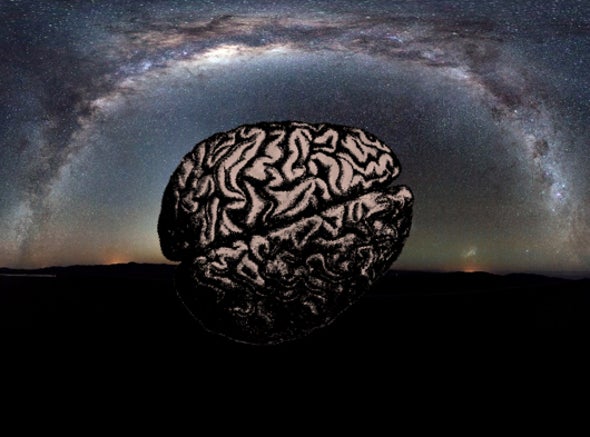Scientists Find 500-Million-Year-Old Fossilized Brain

Scientists Find 500-Million-Year-Old Fossilized Brain
The discovery of new evidence supports the previous speculation on 520 million-year-old human-old brain systems, provoking thoughts about the nature of brains, life, and intelligence in the cosmos.
Soft, squishy, and delicate; brain and nervous system tissues maybe some of the worst candidates for preservation in the fossil record.
In past years the best examples of the ancient brain and nerve structures have come from creatures trapped and preserved in amber that was a couple of hundred million years old. But a few years ago paleontologists claimed to have found evidence of brain structures in the fossil of a 520-million-year-old arthropod – a shrimp-like critter.

That one sample was intriguing but not entirely convincing. Now a new study by Ma et al., reported in Current Biology (and a companion paper in Philosophical Transactions) has followed up with 7 more examples, together with lab work illustrating how the fossilization process may have happened in order to create the features seen today.
The three-part brain systems may be similar to those in modern insects, arachnids, crabs, and lobsters, and appear to be preserved as thin films of carbon or iron oxide-based mineral discoloration.
This is a remarkable discovery. The 520-million-year-old fossils come from the Cambrian period, the time in Earth’s history where life seems to have undergone a number of profound transitions. That includes the ‘Cambrian explosion’ in multicellular diversity and the first discoverable remains of animal ancestral phyla.
Exactly why these brains (dense collections of nerve cells and nerve networks) evolved at this time is open to speculation. But some researchers propose that the advent of multi-cellular life which had senses and complex body movements and contractions, including those positioned around feeding systems, would gain clear efficiency advantages with specialized and speedy nerve-like cells.
Connecting and localizing these cells via nets and clumps would offer further gains, especially as novelties like hunting (and evading hunters) began to pop up in larger and larger-bodied creatures.
The bottom line is that the basic biological structures of brains emerged at least half a billion years ago, seemingly very soon after the emergence of truly complex multi-cellular life.
Modern human brains may be very different than those of ancient arthropod brains, but the evolutionary ‘attractor’ for specialized neural networks manifested itself a long time ago.
And this raises some interesting thoughts and questions on the nature of life elsewhere in the universe and its potential complexity and intelligence.
The fact that brain structures may have arisen relatively fast once larger, complex-celled, life evolved on Earth does not by itself immediately tell us that this is likely to be a universal phenomenon.
In the same way, the apparently early origins of life on Earth doesn’t tell us much about the odds elsewhere – a sample size of one gives limited constraints. However, unlike the origins of life – for which we currently have no definitive theory – for brains, we have some relatively straightforward ideas (as above) about the how and the why of their development.
It could be that the smear-like remains of 520-million-year-old arthropod brains are pointing towards a cosmos full of neural nets.
Exactly how complex those nets are, and whether higher intelligence has emerged in any of them, is unknown, but the odds may be shifting in favor of some interesting possibilities.